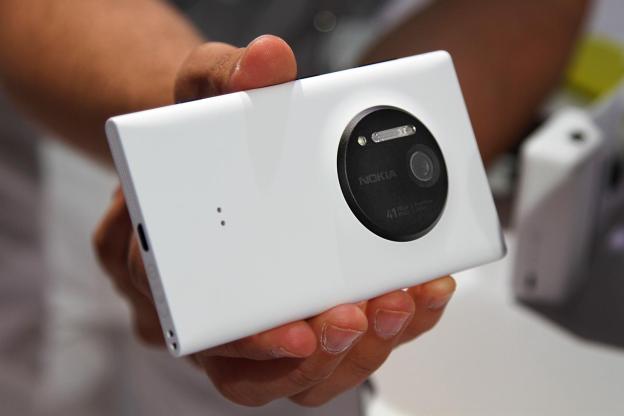
As the lights dimmed and the projector revved up, Nokia kicked off its new product launch event yesterday in New York City with a short video. We expected obnoxious music to accompany seizure-inducing montage of product shots, but what we got instead was a heartwarming, Apple-esque video talking about photography in the modern age: how we use it, how it affects us, and how we are shooting way more photos than before with our smartphones. As if all the prior leaks hadn’t made it obvious, clearly some new camera-centric smartphone was on the way: the Lumia 1020.
With the Lumia 1020, as well as new models like Samsung’s Galaxy S4 Zoom, new smartphones are not just closing the gap, they’re sealing it.
But which will it kill: Other smartphones, or traditional cameras? In the photography conversation, the elephant in the room is the traditional, standalone camera – specifically budget and midrange, compact point-and-shoots. This product category has been on the rocks for a while, and next-gen smartphones like the Lumia 1020 and Samsung’s S4 Zoom may finally be the products that sink the humble point-and-shoot forever.
Experience versus quality
While Nokia didn’t hesitate to brag about the Lumia 1020’s photographic prowess over the iPhone 5 or Galaxy S4, the company avoided comparisons to traditional cameras. (Whether or not the Lumia 1020 is a good smartphone overall is another story.) Elop’s only jab at camera companies during his keynote was noting that Nokia sold more cameras than Kodak did in 2008 – not an impressive statistic with the way things are at Kodak.
Naturally, it’d be folly to claim the Lumia 1020 can go against high-end shooters like interchangeable lens cameras or even the advanced point-and-shoot models like megazooms. But judging from the Lumia’s 1020 impressive image quality, optical image stabilization, and ease of use, we can confidently say that the Lumia 1020 will rival any budget or midrange point-and-shoot – perhaps even surpassing them. Based on our time spent with the PureView camera, camera companies should be really worried if they aren’t already.
In the early days of the smartphone, manufacturers knew they couldn’t compete with traditional cameras on the performance end, with the low-resolution cameras embedded. Convenience alone was enough: Since a

Traditional camera makers have clung to image quality as their sole selling point. “To take great photos, you still need a ‘real’ camera!” But as they continued to push out products focusing solely on quality, they failed to foster the experience that’s made smartphones so popular. Many new point-and-shoots now come with Wi-Fi connectivity built-in, but the experience is usually subpar and still requires an access point or smartphone (the irony) to connect to the Web – an attempt that’s too little, too late. While they are still dominant in high-end and interchangeable lens offerings, profits in the low-end have declined drastically.
No more sacrifice
With the Lumia 1020, as well as new models like Samsung’s Galaxy S4 Zoom, new smartphones are not just closing the gap, they’re sealing it. Consumers no longer have to choose experience over quality, and no longer have to carry two devices to take a great photo. Olympus and Fujifilm have already thrown in the towel, with both companies announcing they are exiting the budget cam sector to concentrate on more lucrative high-end shooters. Sony is rumored to be introducing a Cyber-shot/Xperia hybrid. We await the next moves from Nikon, Canon, Panasonic, etc.
By combining image quality with the easy, enjoyable experience of taking and sharing a photo, new smartphones like the Lumia 1020 – as well the many more to come before year’s end – are truly eliminating the need to own a point-and-shoot camera.






